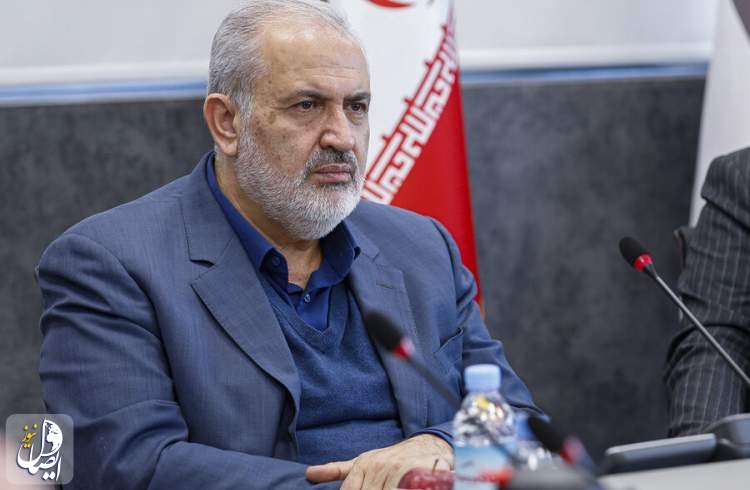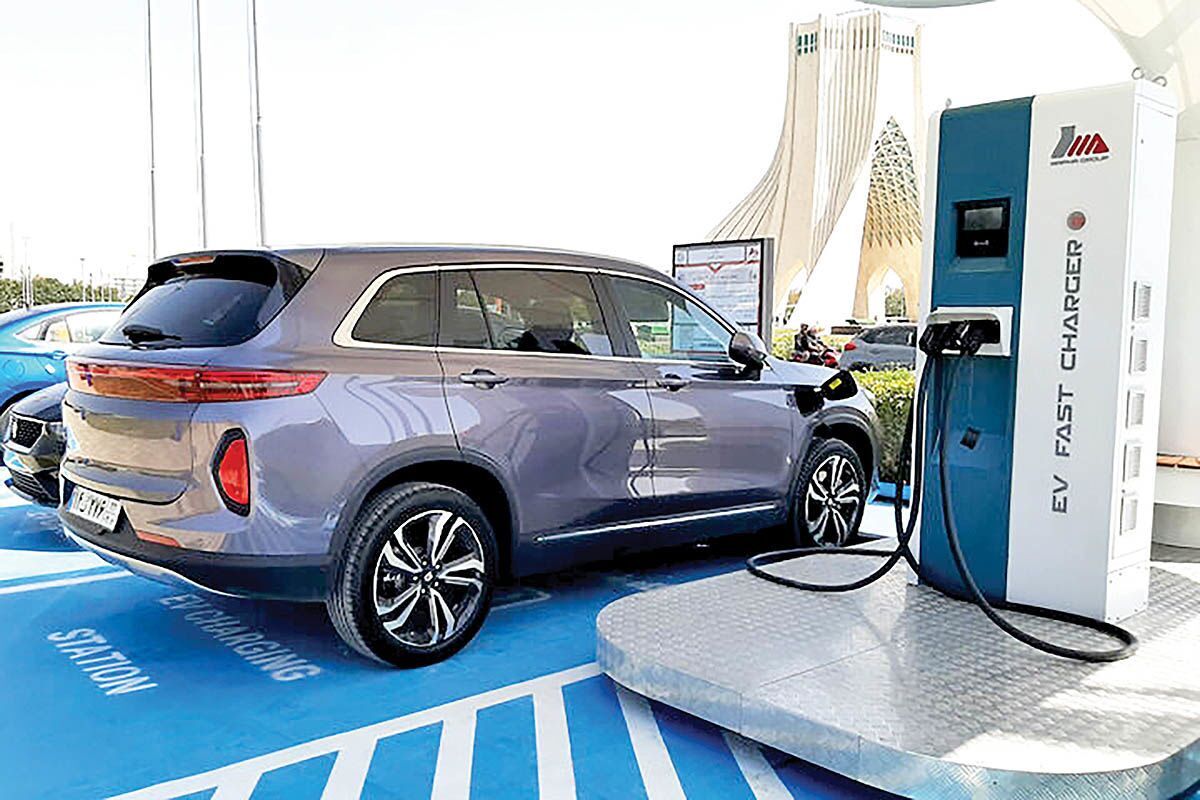Policy on Electric Vehicles in the Last Two Governments
Donyaye Eghtesad: The development of electric vehicles in the country, particularly through imports, was one of the main priorities of the thirteenth government (especially during Abbas Ali-Abadi’s tenure at the Ministry of Industry, Mine and Trade). However, it seems that the new government intends to reconsider this approach.

Last year, after the members of the Islamic Consultative Assembly withdrew their vote of confidence from Reza Fatemi Amin, Abbas Ali-Abadi managed to secure the position of Minister of Industry, Mine and Trade with the support of the parliament. From the early days of his tenure, he emphasized the development of electric vehicles. Ali-Abadi, who was previously the CEO of the MAPNA Group, viewed the development of electric vehicles through the same lens and thus placed significant emphasis on the production and import of these vehicles. His insistence was such that it compelled not only Iran Khodro and Saipa but also private sector companies to plan more seriously for the production of electric vehicles. Ali-Abadi even prioritized electric vehicles for import, to the extent that it was reported that a significant portion of the foreign currency allocated for vehicle imports in the past year was dedicated to electric vehicles.
Now, with the announcement from the Governor of the Central Bank regarding the allocation of one billion dollars for vehicle imports this year, the question arises whether electric vehicles will again be prioritized for foreign currency allocation, or if gasoline vehicles will take precedence, or if there will be a balance between the two. Ali-Abadi’s insistence on the development of electric vehicles, particularly through imports, drew criticism from some experts and automotive industry activists. They argued that while there is no doubt about the global consensus on the necessity of moving towards electric vehicles, this process should proceed logically and with careful and principled planning, rather than being driven by excitement. Critics stated that the development of electric vehicles requires the establishment of various infrastructures, especially charging stations, and that the supply of electric vehicles (whether through imports or production) should be commensurate with existing infrastructures.
Despite these criticisms, the Ministry of Industry, Mine and Trade did not retreat from its electric vehicle goals. If the thirteenth government had not ended a year earlier due to the helicopter crash that resulted in the martyrdom of Ebrahim Raisi, Ali-Abadi’s insistence on developing electric vehicles would likely have remained strong, and perhaps even intensified. Ali-Abadi is still present in the fourteenth government, but as the Minister of Energy, he cannot dictate his preferences centered around the development of electric vehicles as he did during his time at the Ministry of Industry. Although the current Minister of Industry has not made any official statements regarding the development of electric vehicles, it seems unlikely that he will be as insistent on the import of electric vehicles as Ali-Abadi was.

Mohammad Atabak, who has been in office for about a month, has only commented on vehicle production and the regulations for importing used vehicles, without mentioning electric vehicles. Given that Ali-Abadi’s insistence on developing electric vehicles was largely due to his personal interest, and such an approach is not evident in Atabak, it appears that the Ministry of Industry’s policy in this area has changed. Some automotive import industry activists also confirm this, stating that the approach towards electric vehicles will not be the same as during Ali-Abadi’s tenure. On the other hand, last week, the Minister of Economy announced the allocation of one billion dollars for vehicle imports, but it is unclear whether this allocated currency will be used for electric vehicles as in the thirteenth government or if the fourteenth government has a specific plan beyond electric vehicles for importing foreign cars.
In this regard, one automotive import industry activist told Donyaye Eghtesad that the Ministry of Industry’s policy regarding electric vehicles has changed. This activist, who requested anonymity, stated that unlike during Ali-Abadi’s tenure, the Ministry of Industry does not insist on importing electric vehicles, but it is also not the case that all imports will be dedicated to gasoline vehicles. According to him, the new policy is to prioritize hybrid and plug-in hybrid models over fully electric vehicles in the import of non-gasoline models. Based on this activist’s statements, it seems that hybrid and plug-in hybrid vehicles will now be prioritized for import in the development of clean vehicles, rather than electric models. If such a policy is adopted, the Ministry of Industry will be somewhat aligned with global experiences. Worldwide, when automakers began transitioning from gasoline models, they initially turned to hybrids before fully electric vehicles came into play.
However, at one point, excitement around electric vehicles surged for various reasons, including subsidy incentives, and given the high demand for electric vehicles, automakers also accelerated their transition towards electrification. The situation reached a point where some automakers and even some countries announced that by a certain year, they would no longer have non-electric vehicles. However, this trend has changed in recent months, and some automakers have retreated from their fully electric plans, focusing instead on hybrid models, especially plug-ins.
From the outset of discussions about transitioning from gasoline vehicles, there has been debate about whether to shift directly to electric vehicles or to enter through hybrids. Some automakers, like Toyota, believe that transitioning from gasoline to electric vehicles requires a hybrid precursor, suggesting that customer preferences should first shift towards hybrids, and only after preparing the infrastructure and addressing challenges (such as shorter ranges compared to gasoline vehicles) should electric vehicles be highlighted. Therefore, if the Ministry of Industry’s policy on importing clean vehicles has indeed shifted towards hybrids, it aligns with global policies and is likely to be welcomed by import industry stakeholders.

Additionally, focusing on importing hybrid vehicles provides policymakers with the opportunity to prepare the necessary infrastructure for electric vehicles, from charging stations to after-sales services. However, it seems that if a “hybrid” policy is adopted, there will need to be a reconsideration of fuel policies for hybrid vehicle users. Hybrid vehicles also use gasoline, and given their significantly lower tariffs compared to gasoline vehicles, their overall cost will be lower. Therefore, some may opt for these vehicles solely for their lower cost, without fully utilizing their hybrid capabilities, which could hinder the country’s ability to benefit from reduced gasoline consumption in these vehicles. For this reason, it is necessary to revise the fuel quotas for hybrid vehicle owners.
Difference Between Electric and Hybrid Vehicles
However, a question that likely exists in the public’s mind is what the technical differences are between electric and hybrid vehicles. Fully electric vehicles are those that are powered solely by an electric motor, which provides the necessary power for movement. These vehicles do not have a gasoline engine and produce zero emissions. In contrast, hybrid vehicles utilize a combined system that includes a gasoline engine, an electric motor, and a battery, thus drawing power from more than one source for movement. In fact, hybrid vehicles are dual-powered and can use both electric energy and their combustion engine for movement. Regular hybrids cannot be charged externally and do not cover much distance when the combustion engine is inactive. However, there is another type of hybrid vehicle known as plug-in hybrids, which have a more powerful battery than regular hybrids. Plug-in hybrids can travel a greater distance in all-electric mode compared to regular hybrids. Additionally, these vehicles can charge their batteries at home or at designated stations, making them closer to electric models.
Currently, plug-in hybrids are in significant demand, and some automakers have focused their production on this model. Given that plug-in hybrids are considered a middle ground between hybrids and electric vehicles, and can cover several hundred kilometers using both gasoline and electric energy, they could be a suitable option for import into the country. However, it is again emphasized that implementing this model requires a revision of fuel policies (for hybrid vehicle owners). In other words, policymakers need to consider changes in fuel quotas and pricing for consumers of imported vehicles (both gasoline and hybrid), as those who purchase hybrid vehicles benefit from lower tariffs and overall costs compared to gasoline vehicle consumers.

